Wolfram Function Repository
Instant-use add-on functions for the Wolfram Language
Function Repository Resource:
Build a regular polygon on a given line segment
ResourceFunction["PolygonFromBase"][base,n] builds a regular n-gon on the line segment base. |
Build an equilateral triangle on a base segment:
| In[1]:= |
| Out[2]= |
Show the construction:
| In[3]:= |
| Out[3]= | 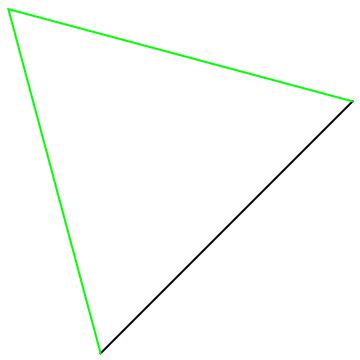 |
Build a series of polygons on a base:
| In[4]:= | ![base = {{0, 0}, {1, 1}};
Graphics[{Line[base], Table[{Hue[n/13], Line[ResourceFunction["PolygonFromBase"][N[base], n]]}, {n, 3, 12}]}, ImageSize -> Small]](https://www.wolframcloud.com/obj/resourcesystem/images/41c/41c7ef9b-0cc9-43e0-8115-f8a3ed012170/54f296d38e46ac61.png) |
| Out[5]= | 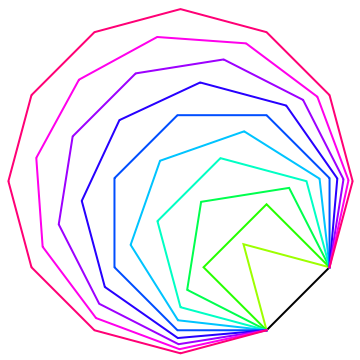 |
Reversing the order of the points in the base segment gives a reflected polygon:
| In[8]:= | ![n = 7; base = N@{{0, 1}, {2, 3}};
Graphics[{Line[base], {Green, Line[ResourceFunction["PolygonFromBase"][base, n]]}, {Blue, Line[ResourceFunction["PolygonFromBase"][Reverse[base], n]]}}, ImageSize -> Small]](https://www.wolframcloud.com/obj/resourcesystem/images/41c/41c7ef9b-0cc9-43e0-8115-f8a3ed012170/6b7c622004242ae4.png) |
| Out[9]= | 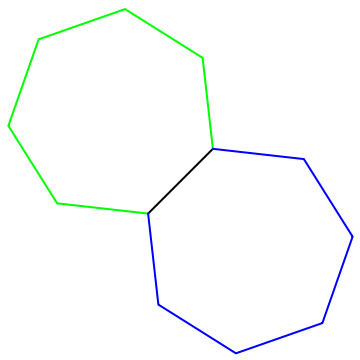 |
Build a regular hexagon from an arbitrary triangle:
| In[10]:= | ![{x, y, z} = RandomReal[{-1, 1}, {3, 2}];
g = Mean[{x, y, z}];
x1 = 2 x - g; x2 = 2 g - x1;
y1 = 2 y - g; y2 = 2 g - y1;
z1 = 2 z - g; z2 = 2 g - z1;
tris = ResourceFunction["PolygonFromBase"][#, 3] & /@ Partition[{x1, y2, z1, x2, y1, z2}, 2, 1, 1];
Graphics[{EdgeForm[Black], Opacity[.4], White, Polygon[#[[2]] & /@ tris], Polygon[{x1, y2, z1, x2, y1, z2}], LightBlue, Polygon /@ tris, Polygon[{x, y, z}], Black, Line[{g, #}] & /@ {x1, y2, z1, x2, y1, z2}}]](https://www.wolframcloud.com/obj/resourcesystem/images/41c/41c7ef9b-0cc9-43e0-8115-f8a3ed012170/29c2cacc471f7f19.png) |
| Out[11]= | 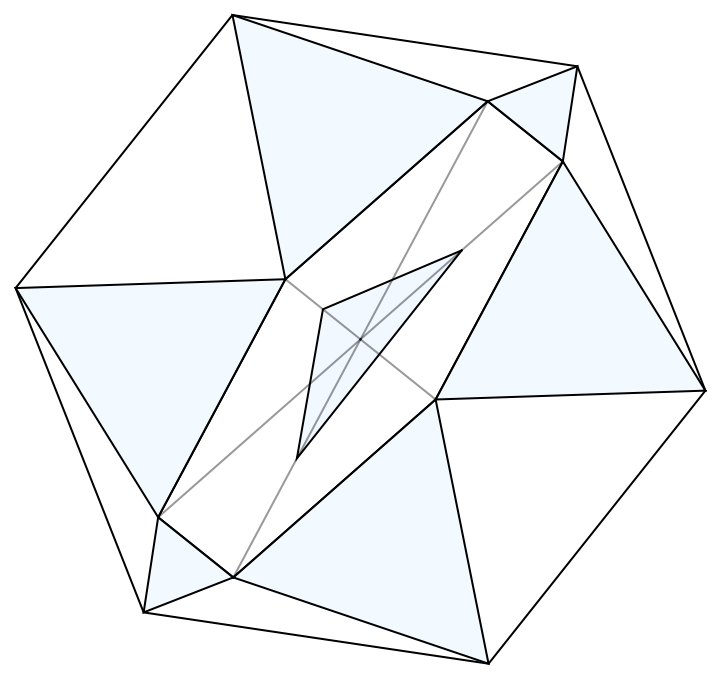 |
A polygonal random walk:
| In[12]:= | ![n = 5;
Graphics[
Map[{RandomColor[], Polygon[#]} &, NestList[
With[{base = #[[RandomInteger[{2, n - 2}] + {1, 0}]]}, ResourceFunction["PolygonFromBase"][base, n]] &, N[CirclePoints[n]], 20]]]](https://www.wolframcloud.com/obj/resourcesystem/images/41c/41c7ef9b-0cc9-43e0-8115-f8a3ed012170/5f3fd6eabf888cac.png) |
| Out[45]= | 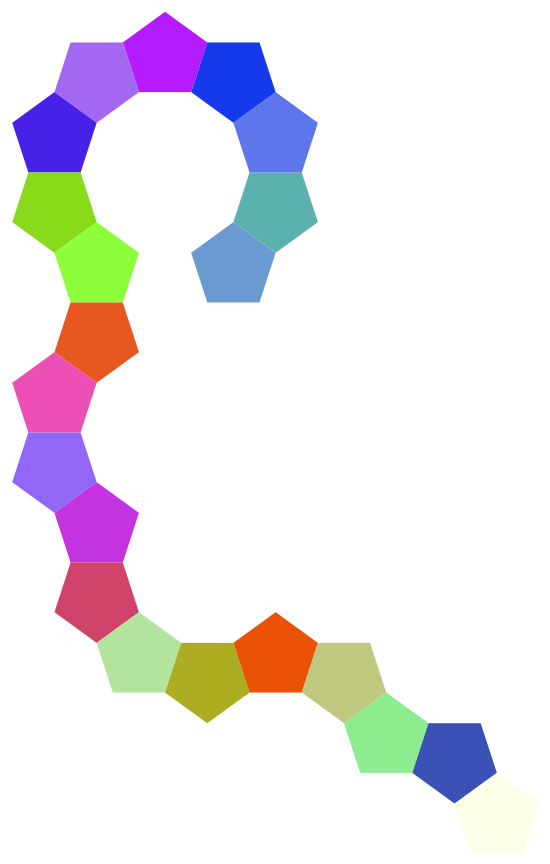 |
This work is licensed under a Creative Commons Attribution 4.0 International License